Don’t Read the Manual
OK, I’m assuming you all know how to take a photo with your camera and have fully read the manual…
…nope, nor did I!
You got your camera out of its box and charged it up and started snapping on auto ASAP.
I’m the same with anything new, to be honest. It’s only when I really can’t figure it out that I’ll actually start reading the manual.
Anyway, after wandering around and trying the zoom and snapping at anything that moved—mostly ducks!—I finally consulted the manual. If you’ve ever done the same thing as an amateur photographer with a new camera, I’m sure, like me, you eventually wanted to know what the dials do and what all the numbers mean, as the photos you intend to take had better be superior to what a mobile phone produces—even if they are only photos of ducks (I’m guessing you also took photos of ducks! Why is that? Why do new photographers always take lots of photos of ducks? It’s like we’re hoarding them for some special duck event one day!)
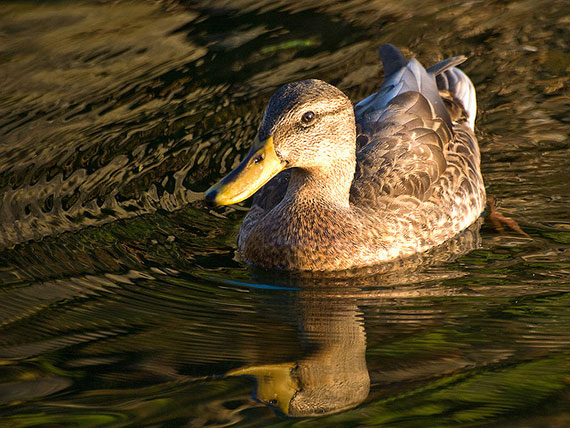
Photo by Michael B.; f/5.6, 1/250-second exposure.
Forget the Numbers
I’m going to keep this simple for you so we can move on and actually start doing the cool stuff and not worry about the complete science of everything. Skip this, by the way, if you’re already using your camera on Tv, Av, or Manual mode.
To alter your settings on your camera, you’re going to have to turn the dial on top so that it reads (for Canon) M, Av, or Tv. If you’re using the little pictures on top or the green square, your camera is still on auto mode and will not let you change much. If you have your camera right now, set it to M. Don’t be scared; we’re just playing with settings, not taking a master class.
Stop! F-Stop?
So what’s f/16? or f/5.6?
This number is a control for your lens (light is measured in stops—the same as how on a ruler, distance is organized into centimeters. I’m not going into the history and science of these numbers here), and it does two things.
Assuming you have a standard, cheap kit lens (the lens they gave you with the camera) it will be capable of giving you f/3.5 to f/22. Now, it’s cheap, and due to technical issues, it can’t hold these numbers if you set them and then zoom in or out. I’ll go into more detail later on and compare between a cheap lens and a pro lens. Just know for the moment we are going to work with f/5.6 to f/22.
So clear your head and forget these odd numbers like f/3.5 or f/4.0. Just know that each time you raise or lower this number, you are making two changes at once.
We’ll start with f/5.6 to f/8. Setting a low f-stop number opens a doorway inside your lens, allowing light to come in. And once you have focused onto something, it creates a more blurred background. This is one of the most popular settings to use for portraits.
To increase this blurring, zoom in closer your subject and take a shot (stand back and zoom in if you have to) and see the result. Although you will get some background blur without zooming in, when you zoom in with a low f-stop number, the background magnifies even more. In another article, I will go into the differences between a bokeh/prime lens and a zoom lens.
So guess what the high number does…
Yes, from f/8 to f/22, you start to increase the depth of field, the photo gets sharper front to back, and you are also limiting the amount of light coming into the camera. Again, if you want front-to-back sharpness, don’t zoom in too much!
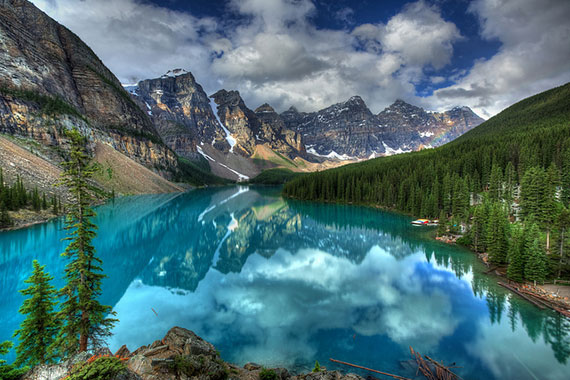
Photo by edwademd; ISO 100, f/8.0, 1/125-second exposure.
So forget the numbers. Just know that a low number is good for low-light photos with blurring, and a high number is good for front-to-back sharpness and limited incoming light.
The next trick is balancing the light to control your photo.
The Next Trick
You might be taking a photo on a very bright day, and you want to use f/2, but your shots are coming out very bright or white (over-exposed). You need a way of controlling the light without changing the f-stop. This is where your shutter comes into play, and the shutter also controls two things.
It can be slowed down to allow more light to come in, which helps with your exposure, but the drawback here is that anything moving in front of the camera could potentially be blurred. In this case, we are talking about more light in the scene, so if you’re shooting at f/2, push the shutter speed higher and freeze-frame the scene.
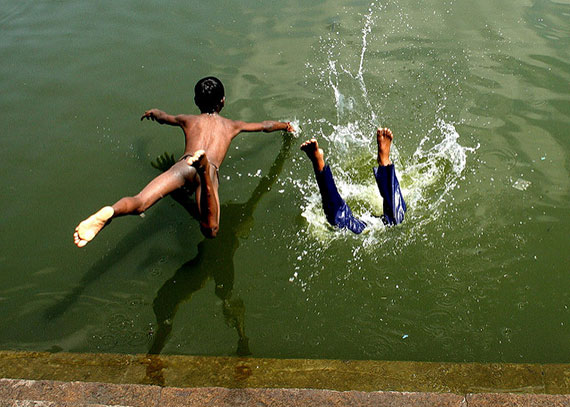
Photo by Simply CVR; ISO 400, f/8.0, 1/400-second exposure.
One way to experiment with this is to set your camera to Tv mode (shutter priority) and try some shots on a slow speed and some on a high speed. Compare your photos, and you will see that the camera made adjustments for you to affect the photo because of the shutter speed changes you made—fast or slow.
Shutter Play
When you press that button to take your photo, you hear a “click-click.” That is the little door (or shutter) inside your camera moving out of the way so the light coming into your lens passes through to your camera sensor (the device that records light, which is converted into information that ends up on your SD card in the form of a photo).
You can control how slow or fast this shutter opens and closes. The longer you leave it open, the more light hits the sensor until you get the desired exposure.
The camera is sensitive to light, which is why your photos may sometimes come out too bright or dark if you’re not in control.
Let’s say that the photo you want to take was at the end of a sunset and the light was not very plentiful, but you wanted to shoot it at f/16. As you should now know, this number limits the light coming into the camera, but gives the scene front-to-back sharpness.
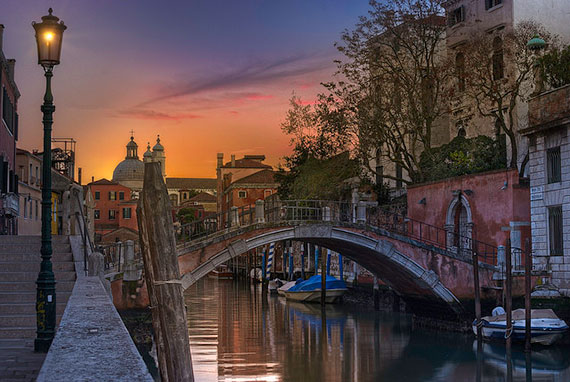
Photo by Maurizio Fecchio; ISO 400, f/8.0, 1/10-second exposure.
By slowing down the shutter, you give the camera more time to compensate for the lack of daylight (ambient light) and the controlled light coming into the lens and enough time to create a balanced photo exposure.
The average, normal speed of your shutter is considered to be 1/125 of a second. This speed is reasonably fast enough to hold your camera steady and take a clear photo. I can hold my camera and take a photo with a shutter speed as slow as 1/60 of a second—but anything slower, and I will likely have a blurred photo from my own movement. But if you’re taking a photo in low-light conditions (like during a sunset) or with a slower shutter speed, your camera should on a tripod so you can have more shutter control at your disposal when you need it.
This is where it starts to come together. Let’s suppose I took the same photo with an f-stop of f/2.8. I can’t leave the shutter at 1/4 of a second, since so much light would come into the camera that the photo would be overexposed—bright and washed out.
You’re a juggler with intent.
So to compensate, I would have to increase the shutter speed so that it opens and closes more quickly. To get the photo the way we want it, we have to learn to balance light. If you make a change to your f-stop, you will need to make an adjustment of another sort elsewhere to compensate. As we go on, you’ll hopefully understand this better.
Know that your camera is your tool; it may have lots of fancy processors and metering systems, but you’re in the hot seat (I would not want it any other way!), and your camera does not know what you’re trying to do or what it is looking at. So as a juggler of light, you will eventually know when to press that shutter button and make that photo.
The other control your shutter offers is a sense of movement—or the opposite: complete motion freeze. Now, if you need your f-stop number to stay where it is, Tv mode is not for you, because in this mode it’s going to keep your shutter speed fixed at whatever you tell it to, but the auto ISO and f-stop are going to be constantly changing.
Something to Try
Now for this quick experiment, we want to control the speed of the shutter, and you can’t do this in Av (or aperture priority) mode. Instead, M for manual is what we will need here, but we are going to leave the ISO to the camera (as we are not talking about the ISO right now, make sure it is set to auto and not a number, and we will come to this eventually).
- In manual mode, set your f-stop to f/5.6.
- Adjust your shutter dial to a slow number, say 1/20 of a second.
- Take a shot (and don’t worry about what you shoot), and then set it to 1/200 of a second and take another shot.
Assuming you have set it correctly, your camera has kept the same photo exposure (by changing the ISO setting in the background), but you managed to keep the f-stop the same whilst making adjustments to the shutter.
You can do the same process to the shutter by repeating the same experiment, but changing the f-stop number instead:
Set the shutter to 1/80 of a second for the moment, but change the f-number to f/5.6 and take a shot. Then set to f/22 and shoot again. So, this gives us different exposures with the same shutter speed, and let’s not forget the lessons of blurring (or bokeh, as it is sometimes called). So what did we just learn? Here is a breakdown:
- Photo at shutter 1/20 = too blurry for handheld, but quality of shot is good (ISO)
- Photo at shutter 1/200 = Sharp, frozen photo with some bokeh
- Photo at f/5.6 = Generally sharp for handheld, and background begins to blur from focus point
- Photo at f/22 = Sharp front to back, but picture quality may have been sacrificed (ISO — don’t panic; ISO is almost next!)
The Big Freeze
So here’s a little bit more about shutter speeds.
The faster your shutter speed is, the quicker it opens and closes inside your camera, which limits the light coming into the camera. On a bright summer day, you can happily take photos at a speed of 1/200 of a second and get good handheld photos. And if its really, really sunny, you can push this up higher as you see fit. The more you push this number, the quicker the photo, and the more “frozen” the scene is. Not because it’s cold, of course, but because movement is frozen in that time.
For example, pick up any sports magazine, and you will see footballers in mid-air, sweat drops and footballs in a solid state. The photographer who took these shots would have used a fast shutter speed like 1/800 of a second—fast enough to catch a Formula One car!
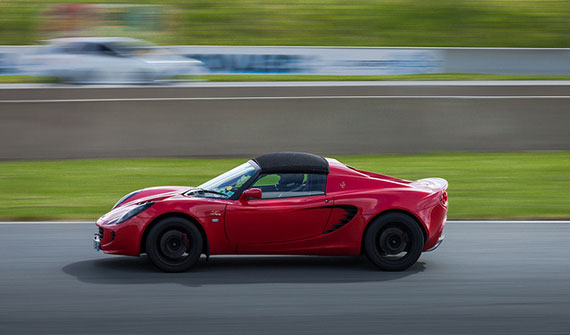
Photo by www.twin-loc.fr; ISO 100, f/13.0, 1/100-second exposure.
Find a fountain and shoot at 1/4000 of a second!
If you shoot at this speed on a bright day, you can see the water is choppy and frozen in motion.
ISO
ISO 50 on my Canon 6D is the highest quality recording it offers. It is also the lowest light sensitivity setting.
So let’s recap for a second. Are you seeing a pattern forming yet? Three controls: each does two changes at once, and all three affect light either up or down in volume. Or do they?
The ISO, when set to its lowest number, simply records faster digitally and so requires more light. If pushed to its higher numbers, like say ISO 12,800, it’s very sensitive to light and is a lot brighter, so your camera needs less light to record a photo for you.
The ISO settings cannot stop light coming into the camera once it travels through the lens and passes through the shutter, so technically speaking, it’s not a control of light. But just keep in mind that playing with these settings does make a change in the camera’s behavior if you happen to set an ISO at a particular number in Av or Tv modes.
Let’s suppose I’m indoors on a bright day, and my camera is set to Av mode. If I changed my ISO to 400 or even 800, this would be sensitive enough with the available light for the camera to auto increase the shutter speed and get you a reasonable handheld exposure. The downside to increasing this ISO number is that it creates more noise in the photo, which means it decreases the overall quality. Remember the fountain photo? I shot mine at 1/4000 of a second in Tv mode, and its ISO only went to 640, as it was a bright day on the coast—plus it was a white fountain reflecting more light.
ISO quality varies per camera or mobile phone. You can shoot a pretty good photo up to 3200 ISO, and noise reduction software can make it look very good.
More about quality in a sec; I want you to understand a little of the impact that your camera setting changes are making. As as I said earlier, you are a juggler of light. So here is a little exercise:
- Like before, set your camera dial to Av, set your ISO to 100, and take a photo of something.
- Next, set your ISO to 800 and take a shot, and then to 3200 and take another.
Which of the photos worked out better for you? Have a look on the back, and zoom in using your display screen onto the object you focused on; see if the photos look any different.
Your camera records settings known as Exif data that are attached to each photo file. Getting to this data varies by camera, so look this up. If you get to this data, you’ll see that the camera made adjustments to the f-stop and the shutter speed as you changed the ISO.
High ISO is Bad… and Good
I’m hoping that you’re not feeling too overwhelmed with all this. If you get your head round these three main camera settings, everything else is easier, as all the other settings in your camera usually only need to be set just once depending on what you’re doing. But exposure is very important.
Usually it’s good practice to shoot in the best quality possible, especially if there is enough light. It’s our job to get the best capture possible, right?
Now, it seems like a terrible thing to shoot in any ISO higher than 800 (I will go into quality on high ISOs later and how to manage them), but there are situations when a high ISO can actually give a photo an improvement in-camera without having to muck about in Photoshop.
It’s a judgement call! When Canon released the 24mm to 70mm Mark II lens in 2011 (a fast lens), I was lucky enough to be one of the first few to get hold of one and try it out shortly after buying it. I fired a shot in Av mode (Aperture Priority) at f/2.8 and zoomed in at 70mm (the widest and tightest it can go) to see how it looked. The Canon 550D came back with a photo setting: shutter speed of 1/40 of a second and ISO 6400. In color, the photo was noisy, and even with noise reduction it did not look good—but I knew this would happen. I knew that, in the low light, the camera would have to choose these settings, even with a wide aperture (or low f-stop number).
I was looking to make a black-and-white photo, and I wanted to have natural grain in the photo as close to those old, black-and-white film photos we used to see from the pros.
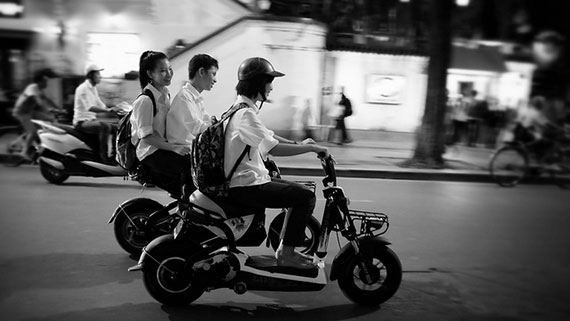
Photo by Konrad Lembcke; ISO 3200, f/2.0, 1/60-second exposure.
I believe Sir David Bailey shoots digital now, but when he does create B&W shots, he still shoots with film. So when I processed this photo, I made sure no noise reduction was applied, and once I added a black-and-white layer (and there are many to choose from in Photoshop and other filter software), the noise was now an advantage toward the look I wanted.
Sometimes in photos, we want grain. It depends what you’re doing. Some photographers choose to shoot the photo perfectly and add grain afterward in Photoshop. As an example, it may be a wedding, and the color photo does not work well, so you change it to B&W—and if it was shot in a good ISO, you may decide to add the grain if you feel it improves the shot (your call). But as I said earlier, your camera is a tool just like Photoshop is a tool; you have paid a lot of money for your camera, so your first task is to do as much as possible in-camera before having to tweak it afterwards (get your money’s worth!). Besides, if you get it right in camera first, then there’s no need to spend time later fixing it, right?
As I said earlier, it’s a judgement call. With practice, you will start to exercise this more often.
Give it a go. Set your camera to P mode or Av mode, and ISO to its auto setting, and just take some snaps and see what you come up with!
I hope this tutorial has been helpful. Maybe it’s time to take some photos of ducks in case there is a duck competition?
About the Author:
Jamie McConnachie is a professional wedding photographer specializing in natural light photography and mobile studio flash photography such as corporate headshots in Essex, Hertfordshire and London.
Like This Article?
Don't Miss The Next One!
Join over 100,000 photographers of all experience levels who receive our free photography tips and articles to stay current:
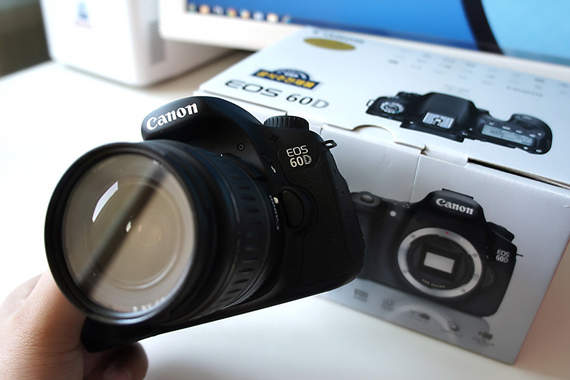






Very thorough, informative article, Jamie. Thank you.
You might want to change your initial description of how the shutter works. You say the “click-click” sound is caused by the shutter moving out of the way. As you know, it is the mirror that reflects the image to the eyepiece that moves out of the way. The shutter, to be more accurate, opens and shuts (whence the name “shutter”) to create then close a hole whose size is set by the f/stop value.
I’m not saying your description is wrong but, to me, the phrase “moving out of the way” could be better chosen. And that’s the end of my nitpicking for today. ?
David,
thank you for the comment. I am not sure either. I see comments on Internet from millions of users who share their experiences and add to the discussions they participate into. I think it is OK to enrich a discussion and share information.
It this is not allowed, I would be glad to remove my post.
Thank you for such a richly packed guide to photography tips for beginners as I will take this and use it to improve my skills!
Very informative article. It explains the photography fundamentals in easy to understand terms. Agree with the author that this is what every new photographer should learn first. Knowing aperture, shutter speed, understanding light is a must.
Also think that avoiding some of the common mistakes every photographer makes would allow him or her to grow much faster and improve the final images. Shared few thoughts on the most common mistakes photographers should avoid: http://weddingphotographyblogger.com/2014/10/16/top-10-mistakes-every-professional-photographer-should-avoid/
Hope you find it useful and informative. We can improve the photography as a visual art by growing as photographers and improving our understanding and skills.
As a beginner I enjoyed the article and found it very informative…. Thank You Jamie will watch for more from you…
“Trifon Anguelov” I was wondering if it is proper to piggy back your Work on another authors article. I should point out that Jamie’s article was for us beginners and you interjected your article/information for professionals. In my opinion there is very wide gap between whom Jamies article was written for and professionals such as your self or your article tends to be written for. Could it be possible that you are lacking for attention?
However if this is normal practice in the Photo World I stand corrected and I do sincerely apologise ……
Jamie this is awesome, thank you so much!
I nearly fell over when I read the first part – the very first pictures I took when I bought my DSLR camera was of ducks!
And yes I’m reading this now because those pictures were no good, and I can’t figure this thing out on my own (and manuals are hard to understand)
I’ll have a play around and probably get that eBook next
Thanks :)
Sidenote on using ISO 50 on the 6D, I believe you actually lose a stop of information in the highlights as reaching ISO 50 is artificially done (so I have read). I have never actually tested it myself, but figured its correct since access to ISO 50 is disabled by default (which would be really silly to disable a higher quality option).
http://www.dpreview.com/reviews/CANON-EOS-6D/16
http://www.dxomark.com/Cameras/Canon/EOS-6D
Have you tried comparing ISO 50 to 100?
Daniel
Dear Jamie,
Thanks for a very informative article.
I am of the opinion that it always pays to read the manual of any gear, camera / lens / flash et.al.,
before even unboxing and later having a step by step ‘dry run’ with the gear and the manual.
I speak from over three and a half decades of experience with 8 cameras, 12 lenses and four flashes …!
– Krishna Kumar
Hi Jamie
Thanks. I get the feeling that I need to experiment. For my own reasons I limit myself to smartphone photography. And as you know they have one f-stop.
I therefore have to play with other settings. What I need to do is design a test for a scene. I take landscape photos at sunset or sunrise. And need to look at different iso, different light bracketing and shutter speed.
At home I can design these possible set up then go out and take and compare.
Any idea on how you would set up such an simple experiment?
Regards Johan Horak